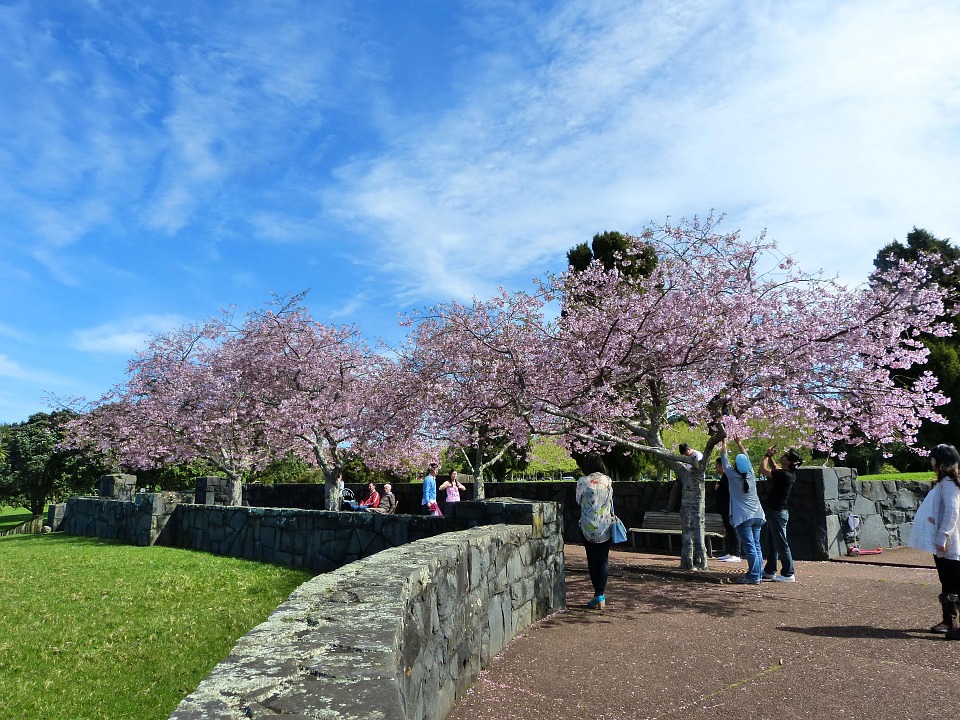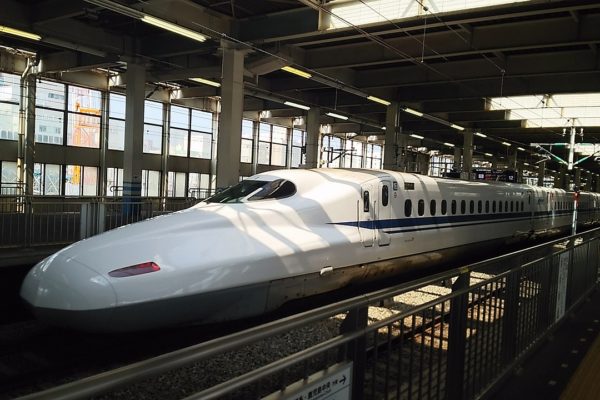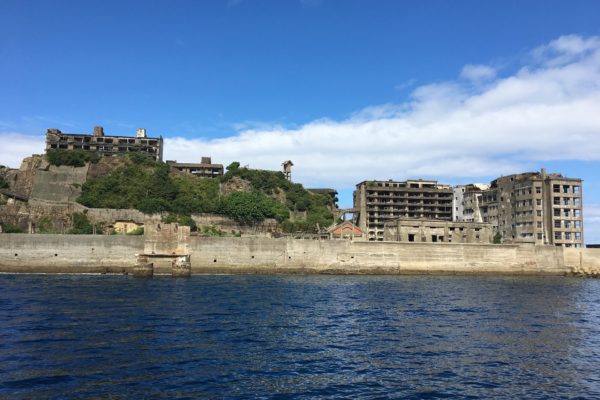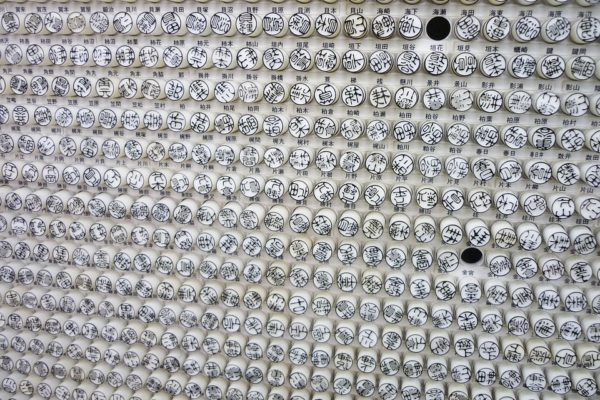Spring is one of the best times to visit Japan. Starting around the last week of March to the first week of May, the cherry trees across the country reach their peak blooming stage, and create canopies of gorgeous pink flowers that look magical and breathtaking.
A quick look at the history of cherry blossom season in Japan
Japan’s tradition of going out to view the beauty of the blooming cherry flowers is known as hanami (which translates to “flower viewing”). It started many centuries ago, back in the 8th century, during the Nara Period, and was even referenced in the Heian period literature piece titled “The Tale of Genji.”
The custom was originally observed as a way to celebrate harvest, and welcome the beginning of the rice-planting season. During the Heian Period, Emperor Saga organized sakura viewing parties for his Imperial Court to enjoy food and sake underneath the blossoming cherry trees. Eventually, the practice was adopted by the rest of the society.
Best sakura viewing or hanami spots in Japan

Because cherry trees are everywhere in Japan, the country has no shortage of sakura viewing spots. But, there are some that stand out among the rest, and are highly rated by locals and foreigners alike.
Shinjuku Gyoen (Tokyo)
A large, spacious park in the heart of Tokyo, Shinjuku Gyoen is home to lots of different varieties of cherry trees. Around late March, they start to bloom and turn the park into a stunning visual spectacle. It is open every day throughout the cherry blossom season, and charges 200 yen to enter.
To get there, you can take a 10-minute walk from JR Shinjuku Station, or a 5-minute walk from either JR Sendagaya Station or Shinjukugyoenmae Station.
Philosopher’s Path (Kyoto)
Approximately two kilometers long, the Philosopher’s Path in Kyoto is a pleasant stone pathway along a canal in a quiet neighborhood in Higashiyama district. It is lined by cherry trees on both sides that create a tunnel-like walkway of incredible pink flowers. It starts near Ginkakuji (the Silver Pavilion) and ends around Nanzenji, and takes less than an hour to traverse.
From Kyoto Station, bus numbers 5, 17, and 100 offers direct connections to Ginkakuji, where the beginning of the path is only a few minutes’ walk away.
If you decide to start the trek at the Nanzenji end of the path, take either the Tozai Subway Line to Keage Station, or Kyoto City Bus number 5 to Nanzenji-Eikando-michi bus stop, and then walk 5 to 10 minutes to the path.
Himeji Castle (Himeji)
Himeji Castle is one of the most important and iconic castles of Japan. Referred to as the White Heron Castle (or Shirasahijo in Japanese) for its sophisticated, white exterior, this 400-year-old landmark is one of the only 12 surviving original castle in the country. Its castle grounds consist of numerous gates, buildings, and winding paths, and its gardens have an abundance of cherry trees that people flock to during cherry blossom seasons every year.
From Tokyo, Himeji Castle is a little over three hours away via the Shinkansen. If coming from Kyoto or Osaka, the Shinkansen ride takes less than an hour. And, from Himeji Station, the castle is about a 15 to 20 minute walk.
Kakunodate (Akita Prefecture)
An old castle town and samurai district, Kakunodate is one of the best hanami spots in the northern Tohoku region. It is most famous for its well-preserved samurai houses and hundreds of weeping sakura trees. The Hinokinai riverbank serves as the biggest viewing spot in the city, and hosts crowds of people who want to enjoy picnics under the beautiful pink blossoms.
JR Kakunodate Station is about a three-hour Shinkansen ride from Tokyo Station. To get to Hinokinai riverbank and samurai house district, you can either walk 20 minutes or take a cab from the train station.
Fort Goryokaku (Hakodate)
A Western-style fortress constructed during the Tokugawa Era in the city of Hakodate, Fort Goryokaku is large, star-shaped citadel that has a massive public park that is home to more than a thousand cherry trees. It is visited by many people around early May, when cherry blossom season is at its peak.
The closest major railway station to Fort Goryokaku is Hakodate Station, and from there, you can get on the tram going to Goryokaku Koen Mae, which is about a 10-minute walk away from the fortress’ main entrance.
Kumamoto Castle (Kumamoto)
A 17th century castle known for its black-and-white exterior, large stone walls, and impressive castle tower, Kumamoto Castle is one of Japan’s top three most famous castles. Its grounds are abundant with different varieties of cherry trees that reach peak bloom around late March to early April.
From Kumamoto Station, the castle is a 15-minute tram ride away, or a 30 to 45 minute walk.
Takayama Matsuri (Takayama)
Takayama Matsuri is a two-day annual festival held every spring, from April 14 to 15, in the city of Takayama in Gifu Prefecture. It features several elaborately adorned festival floats displayed around the city, a karakuri performance where karakuri dolls are controlled mechanically to perform dances, a mikoshi (a portable shrine) parade, and an evening festival where the festival floats on display are paraded around town.
To get to Takayama from Tokyo, take a two-hour Shinkansen ride to Nagoya, where you need to transfer to a limited express train for another two-hour-and-twenty-minute train ride.
Cherry blossom products, souvenirs, and other merchandise
During sakura season, you can find many stores and shops around the hanami spots and festival sites that sell a wide variety of products that are sakura-related.
There are sakura ice cream, sakura dumplings, sakura beer, sakura coffee, sakura tea, sakura soda, sakura cake, sakura-flavoured Kit Kats, and even sakura-themed Starbucks drinks.
There are also non-food sakura-themed items, such as mugs and tumblers, jewelry, clothing, shoes, and accessories, which are sometimes available for a limited time only.



